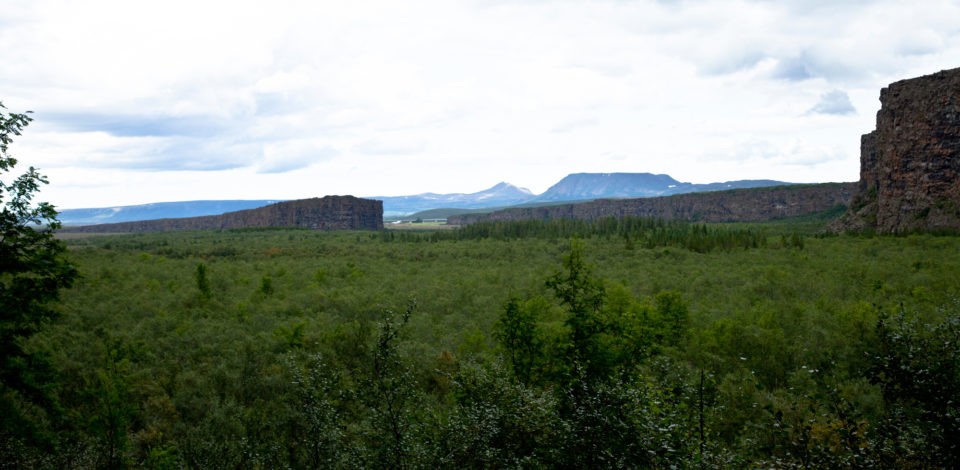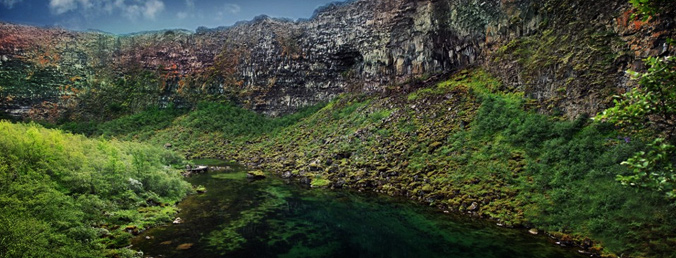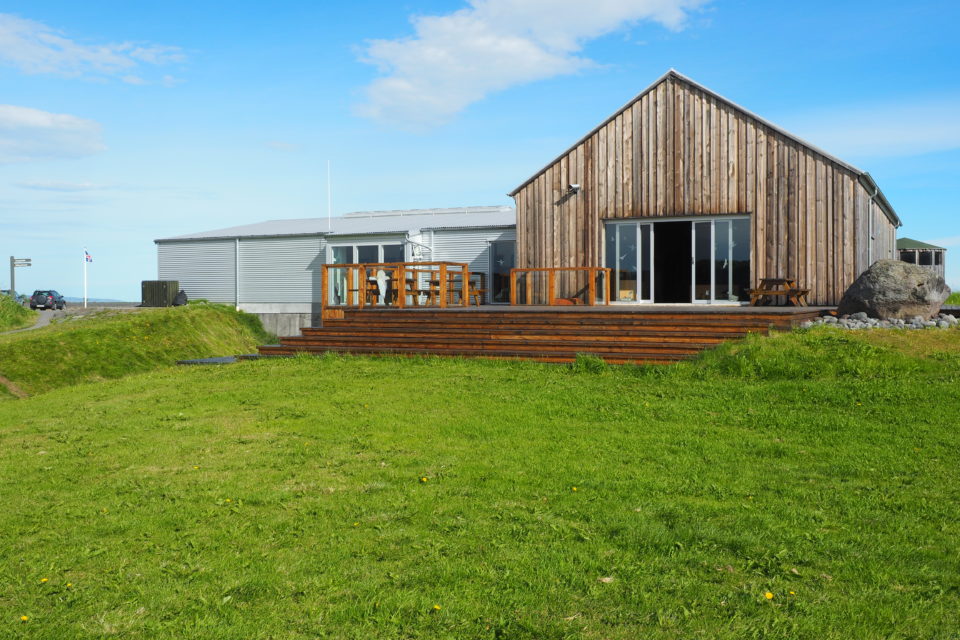
A gigantic, anomalous, horseshoe-shaped rock formation, Ásbyrgi stands guard next to the northern entrance to the 35km Jokulsá Canyon. With geological wonders such as Hljoðaklettar and Dettifoss inside, the Jokulsá Canyon forms one of the most admired walking destinations in the country.
Inside Ásbyrgi there are anything from 30 minute to 7 hour hiking trails. Walk across the canyon floor and enjoy the honeycombed basalt rocks, or traverse the cliffs and marvel at the sheer scale of the rock formation itself. The most adventurous routes involve both, clambering up cliff passages on a series of ropes.
Hiking paths of various length guide visitors around the area. See the official hiking map to learn more.
Ásbyrgi was one of the sites for Sigur Ros in their film Heima, where they toured Iceland playing concerts in different locations.
Ásbyrgi is part of the Vatnajökull National Park and an approved UNESCO world heritage site.
Mythology
According to Norse mythology, the rock formation of Ásbyrgi was formed by the hoofprint of Slippy (Sleipnir), Odin´s eight-legged horse. Slippy must have been a fairly large horse, as the ‘hoofprint’ of Ásbyrgi is about 3.5km in length and 1.1km wide. Odin was pretty much the main God, so it makes sense he’d have an impressive steed, but the towering 100m vertical cliffs look like something to ward off the White Walkers in Game of Thrones, with the footprint so large you need a helicopter to photograph it. So, perhaps imagining this area in terms of horses doesn’t really do the place justice.
Other legends say Ásbyrgi is the capital of the hidden people or Huldufólk, Iceland´s answer to elves. Psychics claim to be able to see their cities and they are said to inhabit the cracks here.
Geology

Sadly, it’s not only common sense which contests the idea of Slippy the giant horse, as geologists also hypothesize a slightly different idea. It’s a little less mysterious, but they claim it’s the result of massive glacial flooding, which occurred when a volcano erupted underneath the Vatnajökull ice cap, thousands of years ago. When looking at the bizarre shape, this can be a little difficult to believe as well. But, the water didn’t carve the rocks into the current shape, it merely washed the soil away that surrounded them. Further evidence lies in the flat plain that stretches out toward the bay, which is similar to those found in the south of Iceland, formed by the same activity.
Flora and Fauna
Along with nesting Ravens and Ptarmigan, there are rarities such as the Arctic Fox and Gyrfalcon. Whilst at Botnstjorn, there is a small lake with a population of Green-winged Teal. Equally well-respected for its flora, the canyon walls help to provide a microclimate for a variety of species. Whilst the woodlands surrounding this area are one of the few examples of how Icelandic ‘forests’ once were, with expansive shrubberies comprised of various types of Willow and Birch.
Services
On the approach there is a campsite, golfing course, visitor centre with an exhibition about geology, and a garage, with an excellent stock of biscuits and surprisingly good selection of CDs (the owner used to work in a music shop).
In summer time handicraft is sold in wooden cottages at the entrance of Ásbyrgi.
GPS: 66°01’11.5″N 16°30’18.1″W

Gljúfrastofa Visitor Centre
Ásbyrgi
671 Kópasker
GPS: 66°01’43.1″N 16°29’13.5″W
Tel: +354 464 1210
E-mail: asbyrgi (at) vjp.is
Website: www.vatnajoekullthodgardur.is
Facebookpage: www.facebook.com/Vatnajokulsthjodgardur
Opening hours: click here